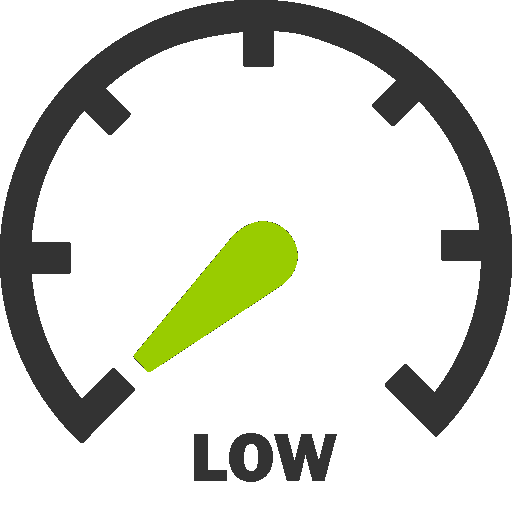Newsletter for international PhDs/academic staff about university life
A regular newsletter can be a nice-to-have instrument for sharing knowledge and improving the visibility of research activities and supporting services, organised at your institution.
This newsletter can be a very useful tool especially for doctoral/post-doctoral students and the junior/project engaged research staff, appointed for specific research tasks. The newsletter can also be used to inform the local community and partner institutions about the activities at your university, strenghtening industry-academia links and opportunities for collaboration.
Benefits of initiating a regular Research newsletter:
- Improved visibility of the research/teaching activities of the university;
- Improved visibility of the events, conferences, invited lectures, etc.;
- Improved collaboration between departments and faculties within the university
- Improved visibility and enhanced opportunities for cooperation with local HEI/ institutions/ industry partners
- Strenghtened local community
- Improved visibility of the university in an international perspective - for this reason it should be either bilingual or issued only in English and available online/shared with relevant international bodies and partners.
Goals
Improved access to information Improved quality of service Improved visibility Social integration
Basic information
| Categories | Networking Institutional Processes Promotion & Visibility Social Integration & Daily Life Family Matters Safety, Healthcare & Wellbeing |
|---|---|
| Mobility stages | During mobility phase Institutional setup Pre-arrival phase After-leaving |
| Delivery schedule | Continuous |
| Importance | Nice to have |
| Scale of organizational change |  |
| Target groups | PhD student/Early career researcher R2 - R4 researchers Lecturers (incl. Language Teachers) |
|---|---|
| Types of contracts of researchers | Visiting scholar Employee in training (interns, research fellows, postdocs) Fixed term employee Exchange student |
| Career stages of researchers | Less than 6 months 6-12-months of experience 1-3-years of experience |
| Lengths of stays of researchers | 0-3 months 3-6 months 6-12 months |
Practice setup
There are different ways to prepare and structure this newsletter, but it is important to emphasise that this will become an official information source and it will have an impact on the University branding in the community. This is the reason to start with a general management board decision, considering the following details:
- The goal of the newsletter (to improve the visibility of the research activities among departments/faculties, to improve the branding of the University, to strengthen the cooperation between researchers/ to inform the local community, to make announcements for future activities, or to report past activities, etc.)
- The target audience of the newsletter (PhD/post-doc students, research staff from the University, visiting scholars, the wider research community, the local community and industry, the wider international community, etc.)
- The scope of the newsletter - Internal newsletter (for researchers/staff/students in the university)/ External newsletter (for local community)/ International newsletter (for international partners/partners beyond teh local community)
- The number of issues of the newsletters to produce (monthly, bi-montly, quaterly\, etc.).
Based on these decisions, the newsletter preparation and its design can be allocated to the Communication and marketing department/ to the PR department/ to HR or IRO department/ to the the Technology Transfer Office (TTO) or another relevant structure. In any case, design and delivery of a regular newsletter for the external public can require significant staff efforts and professional skills and planning. Making a good University Newsletter can significantly increase the visibility of the university and its activities. Based on that, it is recommended to start with a pilot version of the newsletter and consider the received feedback about specific sections and news.
Planning of the newsletter sections can involve experts and ideas from different departments. The following should be considered as possible sections.
Reporting:
- News about on-going research projects
- Reporting articles of past events/conferences/workshops/trainings
- Reporting articles about University celebrations/ ceremonies, etc.
- Reports on cooperation with other stakeholders
- News about major publications and research articles of faculty members;
Announcements:
- Announcements about new coming events/conferences/workshops/trainings
- Announcements about new projects/ grants/ cooperations opportunities;
- Students/Faculty incentives
Services:
- New administrative procedures, incentives, policies;
- New/modified administrative services;
Students, alumni, local/ international/ external community:
- Testimonials, good practices, sharing personal insights from programs, trainings, etc.
- Informal life events, etc.
The next step is to prepare an appropriate design of the newsletter, respecting the overall University branding.
Tips on prepareing the newsletter:
- Consider the sources of information for every section and how to collect information from different sources.
- Design templates for making it easy to collect, translate and adapt texts from different sources.
- Discuss the text content and require improvement of the newsletter.
- Prepare a list of contacts for distributing the newsletter.
| Cost of practice setup |  |
|---|---|
| Time required for practice setup |  |
| Personnel effort required for practice setup |  |
| Actors involved in practice setup |
|
| Indicators for evaluating progress/quality of practice setup |
|
Practice delivery
To plan and deliver every newsletter issue properly and promptly, based on the management decision, the appointed department and its staff should design a smooth process of information collection, editing, translation and design, approval of the final newsletter issue and its distribution.
- Consider the work engagements of the staff
- Provide enough time for sourcing the information from different departments (not less than 10 days).
- Provide a few days for collecting, checking, and editing the content (about 2-3 days)
- Apply the approved design
- Receive formal approval from the responsible person (it can be decided at the management level who will take the responsibility for the final check-in).
- Translate in English and in other languages if necessary.
- Publish on the web and/or send by email, distribute by official university social media channels.
- Inform relevant departments about the newsletter issue.
Collect feedback and ideas about improvements.
| Cost of practice delivery |  |
|---|---|
| Time required for practice delivery |  |
| Personnel effort required for practice delivery |  |
| Actors involved in practice delivery |
|
| Indicators for evaluating progress/quality of practice delivery |
|
Examples of practice
Newsletter
The University's Communications Office publishes a digital newsletter four times a year. The newsletter covers news around education, exchange, research and campus life and is aimed at students, alumni, partner universities and the business community.